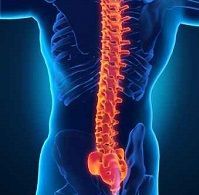Secukinumab Effective in Treating Ankylosing Spondylitis
Results from the MEASURE 1 trial suggest that about 80% of patients with ankylosing spondylitis had no radiographic progression in the spine on x-ray assessment after a 2-year course of secukinumab.

Results from the MEASURE 1 trial suggest that about 80% of patients with ankylosing spondylitis (AS) had no radiographic progression in the spine on x-ray assessment after a 2-year course of secukinumab (Novartis’ Cosentyx). The results were presented at the 2015 American College of Rheumatology Annual Meeting being held this week in San Francisco.
The findings are important, because there are few therapeutic options available to people with AS. Up to 70% of patients with severe AS develop spinal fusion over 10 to 15 years, which significantly reduces mobility. Even with the few available treatments, many patients do not respond adequately to current medications such as non-steroidal anti-inflammatories and anti-TNF therapies.
This is the first time that data on structural spinal progression in AS have been presented for an interleukin-17A (IL-17A) inhibitor. Secukinumab showed a sustained response in improvements of signs and symptoms, physical function and quality of life in AS patients over two years.
Data from 125 patients presented for secukinumab 150 mg showed that 74% achieved an ASAS 20 response (Assessment of Spondyloarthritis International Society response criteria) at 2 years. The study enrolled patients who had either never taken, or who had previously been treated with, anti-TNF therapy, the current standard of care.
In the study, 371 patients with active AS were randomized to secukinumab or placebo. Patients in the secukinumab arm received a 10 mg/kg intravenous loading dose at baseline (BL), weeks 2 and 4, and then 150 mg via IV or 75 mg subcutaneously every 4 weeks from week 8. Placebo was given on the same schedule.
Placebo patients were re-randomized to secukinumab 150 or 75 mg sc based on ASAS20 response at week 16 (non-responders switched at week 16 and responders at week 24).
Lateral radiographs of the cervical and lumbar spine performed at baseline and at week 104 were read centrally, applying the modified Stoke Ankylosing Spondylitis Spinal Score (mSASSS). Two independent readers, blinded to treatment arm and radiograph sequence, scored the digitized images. Secukinumab data were pooled, as there were no major differences between the two doses. Data from patients randomized to secukinumab at baseline and those who switched from placebo were analyzed separately.
At baseline in the secukinumab only group, 104/168 (62%) patients had syndesmophytes, 105/168 (63%) had elevated (>5 mg/L) C-reactive protein (CRP) levels, 42/168 (25%) were smokers, and 123/168 (73%) were men. The mean (±SD) mSASSS at BL was 10.22±16.62; mean change from BL at Wk 104 was 0.30±2.53.
There were no major differences between the secukinumab only and placebo to secukinumab groups in terms of mSASSS change through Wk 104.